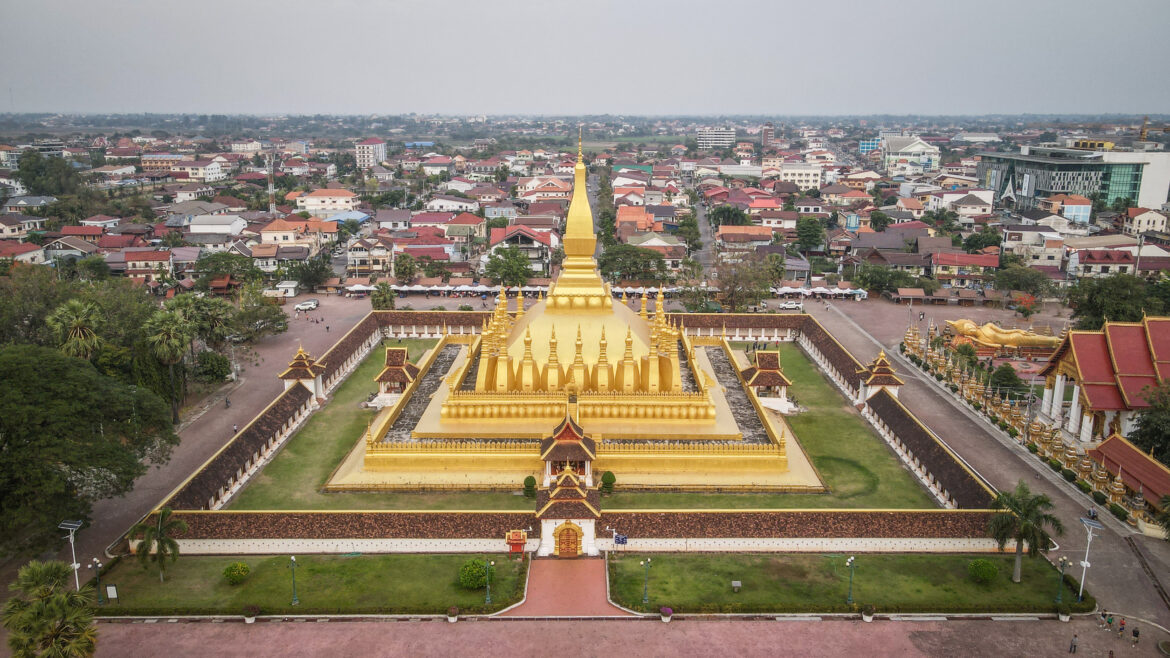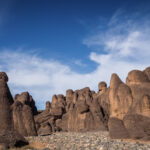Vientiane, the capital of Laos, has a rich history dating back to the 9th century. Initially, it was a Khmer settlement, but it became part of the Lan Xang Kingdom in the 14th century under King Fa Ngum. The city flourished as the kingdom’s capital, serving as a centre for Buddhism and trade.
In the 16th century, Vientiane faced conflicts with neighbouring kingdoms and later fell under Siamese (Thai) control in the 18th century. The city experienced periods of instability and changed hands between Siamese and Burmese forces.
During the French colonial era in the late 19th century, Vientiane became part of French Indochina. The French influence is evident in some colonial architecture still present today. Laos gained independence in 1954, and Vientiane became the capital of the newly formed Kingdom of Laos.
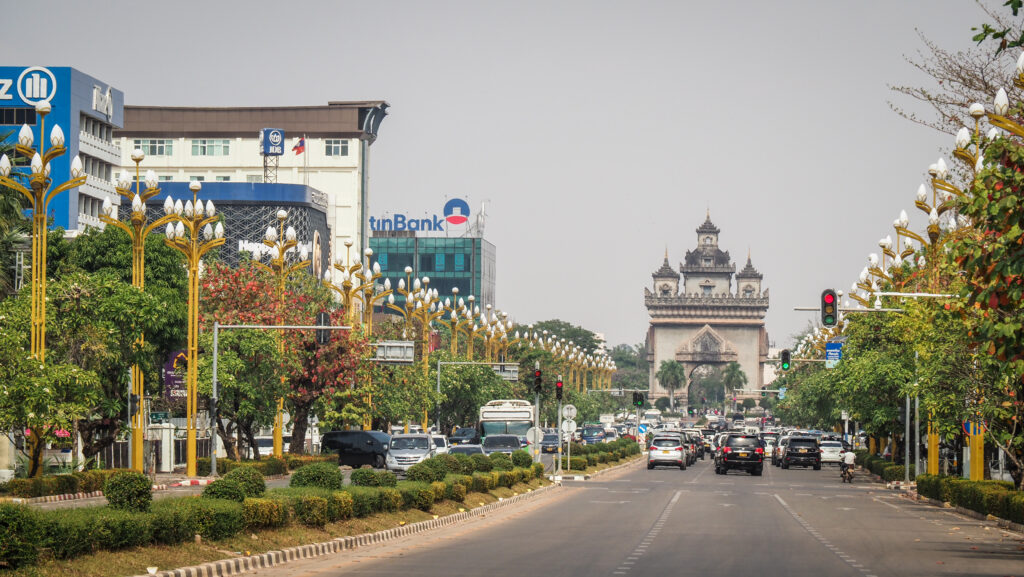
The Vietnam War had a significant impact on Vientiane as the city faced bombing raids due to its proximity to the Ho Chi Minh Trail. After the war, Laos became a socialist state, and Vientiane continued to develop as the capital.
Today, Vientiane is a mix of traditional Lao culture, French colonial influences, and modern development mainly financed by China, making it a unique blend of history and contemporary life. Even though it is the capital city, there’s not a whole lot to do there, but it is still an enjoyable place that shouldn’t be missed.
When to go?
The most popular time to visit Laos is between November and April, at least if you don’t like rain as it’s the dry season. However, nothing is as easy as it seems. You won’t get wet, but it’s the time of intense agricultural burnouts with dense haze hanging over the mountains and the air quality is regularly rated as unhealthy.
I traveled to Laos in March but next time I would go at the very beginning or at the end of the rainy season, so in October or May. Getting a bit wet is certainly better than breathing in all that air pollution!
How to get there?
If you’re flying, major airlines often have routes to Wattay International Airport in Vientiane.
From Thailand, it’s possible to cross via the First Thai-Lao Friendship Bridge from Nong Khai. Alternatively, you can explore overland options, such as buses or trains, depending on your starting point. Check your connections at 12Go.Asia.
Ensure you have a valid visa if required, and consider checking the latest travel advisories and entry regulations for Laos. Once in Vientiane, taxis, tuk-tuks, and rental vehicles are available for local transportation.
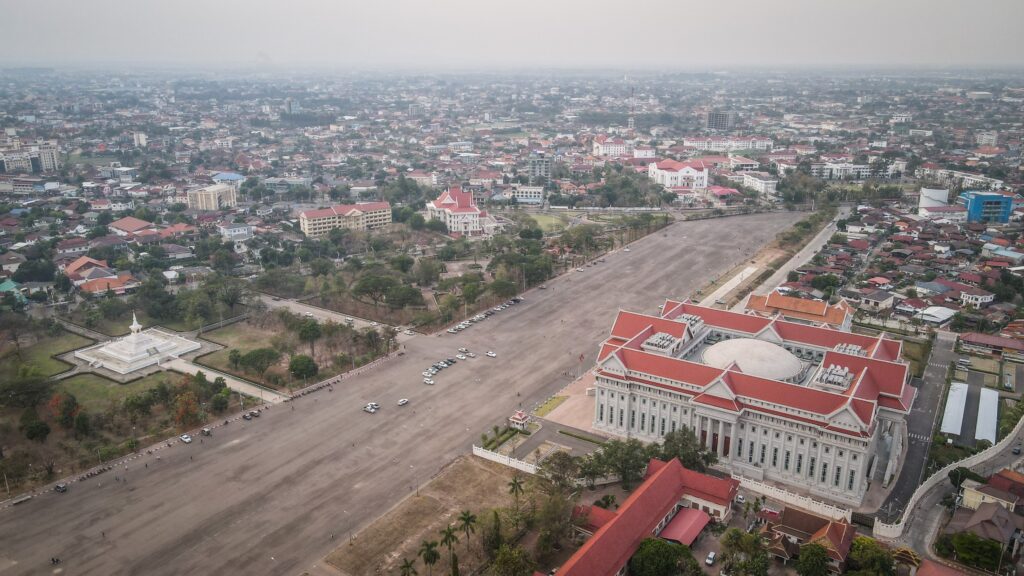
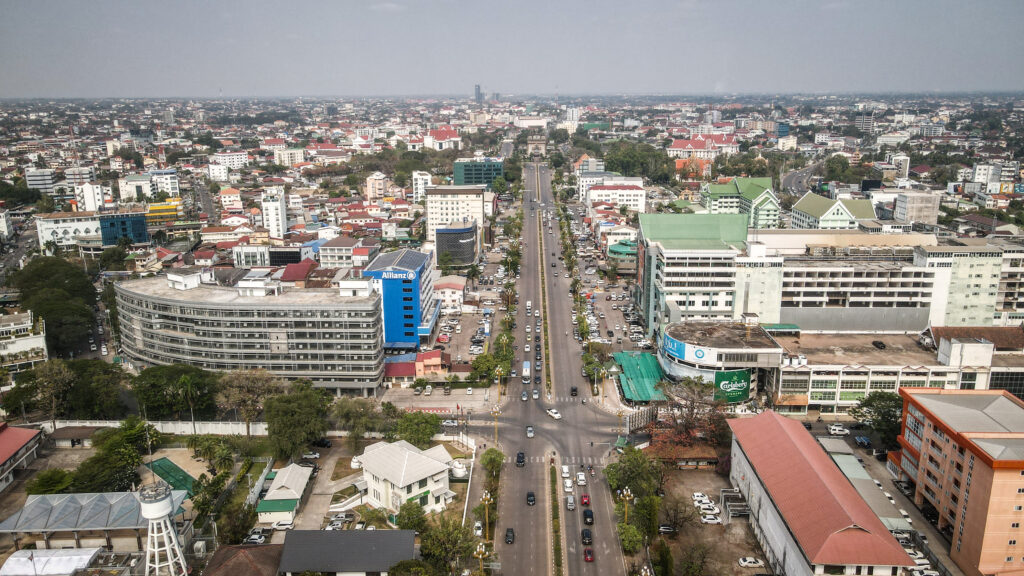
Where to stay?
I spent two nights in Apartment Thidathip which was a great choice. There was a small living room, kitchen, bedroom and bathroom. Plenty of space! The owner was very friendly and he rented me a scooter. It was good to get around the city but I wouldn’t risk a long-distance trip as its condition was far from perfect.
How long should you stay?
The major sights of the city can be seen comfortably in one day. If you plan to check some spots further away, such as Phou Khao Khouay National Bio-Diversity Conservation Area or Buddha Park, I would suggest a minimum of two days.
Sights
Patuxay Monument
The replica of the Arc de Triomphe in Vientiane dominates the business area near Rue Lan Xang. Its official name is “Victory Gate” and it commemorates the Lao who lost their lives in pre-revolutionary warfare. It was constructed in the 1960s using cement provided by the United States for use in building a new airport. Reach the summit for sweeping views of Vientiane.
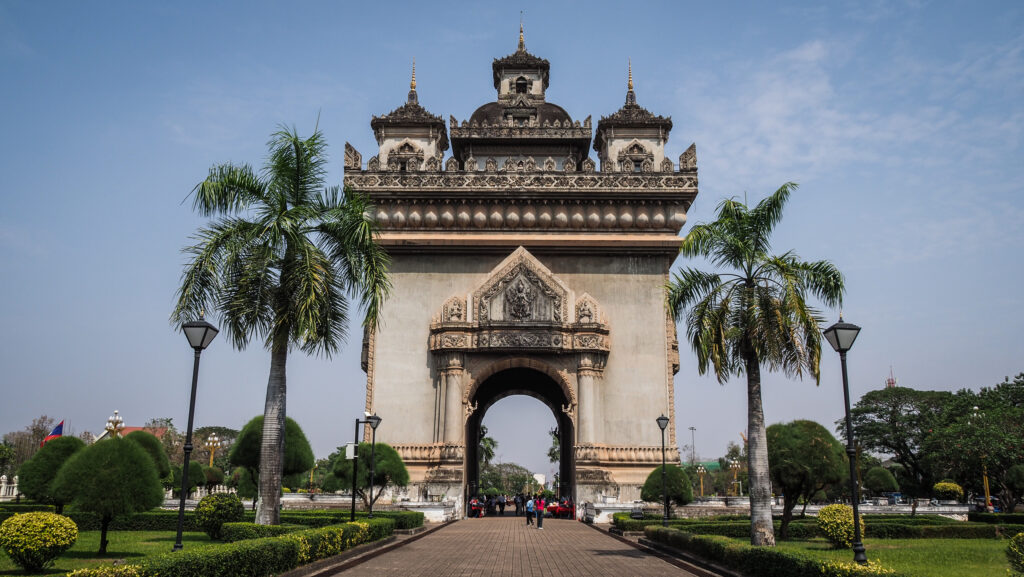
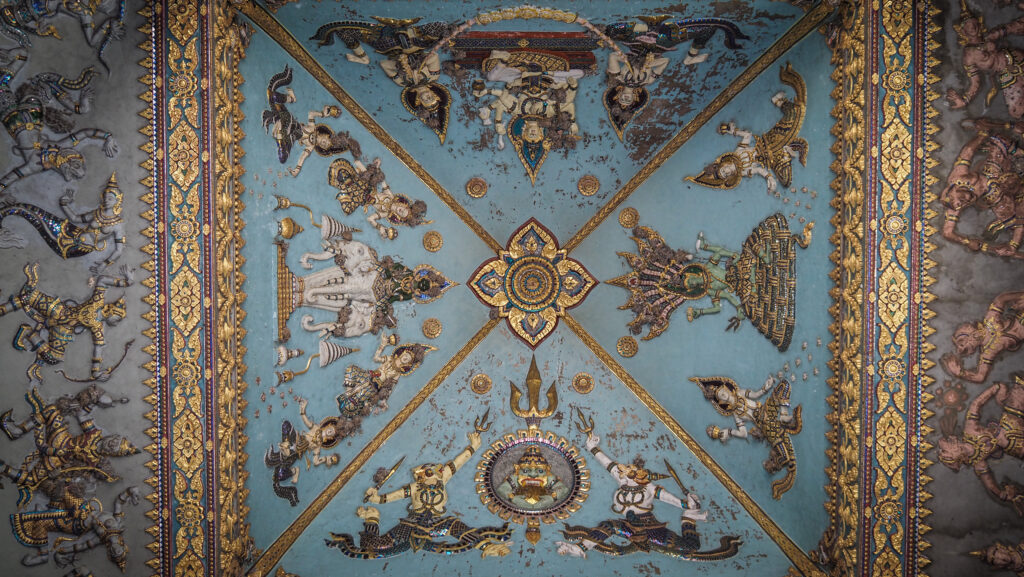
Pha That Luang
Pha Golden That Luang, a symbol of Lao sovereignty and Buddhism, is the most significant national monument. According to legend, as early as the third century BC, Indian Ashokan missionaries built a stupa here to house a fragment of the Buddha’s breastbone. The 45-meter-tall stupa is surrounded by a high-walled cloister with tiny windows. The cloister is 85 metres wide on each side and is home to several Buddha statues and a statue of Jayavarman VII, the famous Angkorian ruler who changed the Khmer Empire’s official religion to Buddhism.
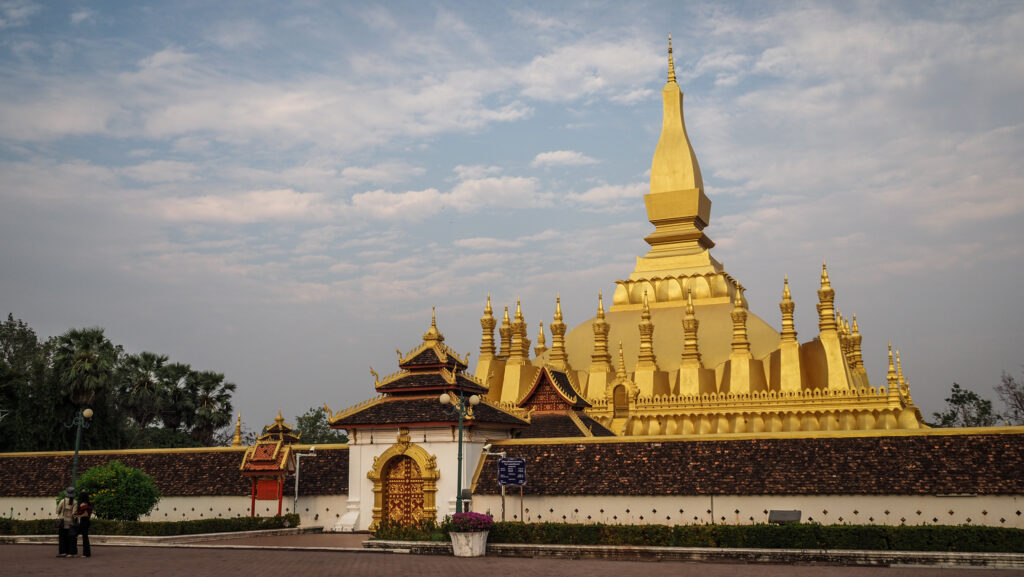
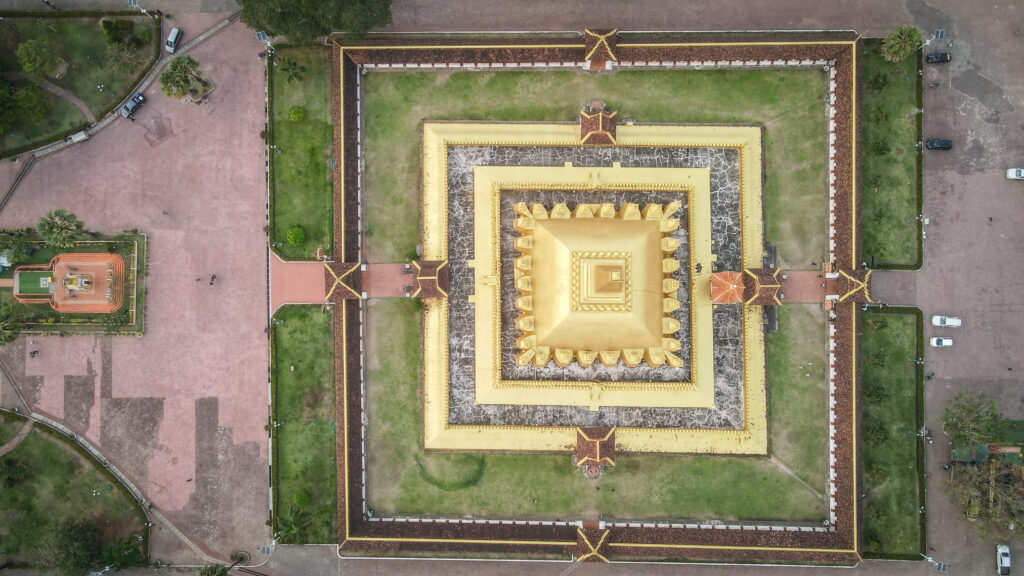
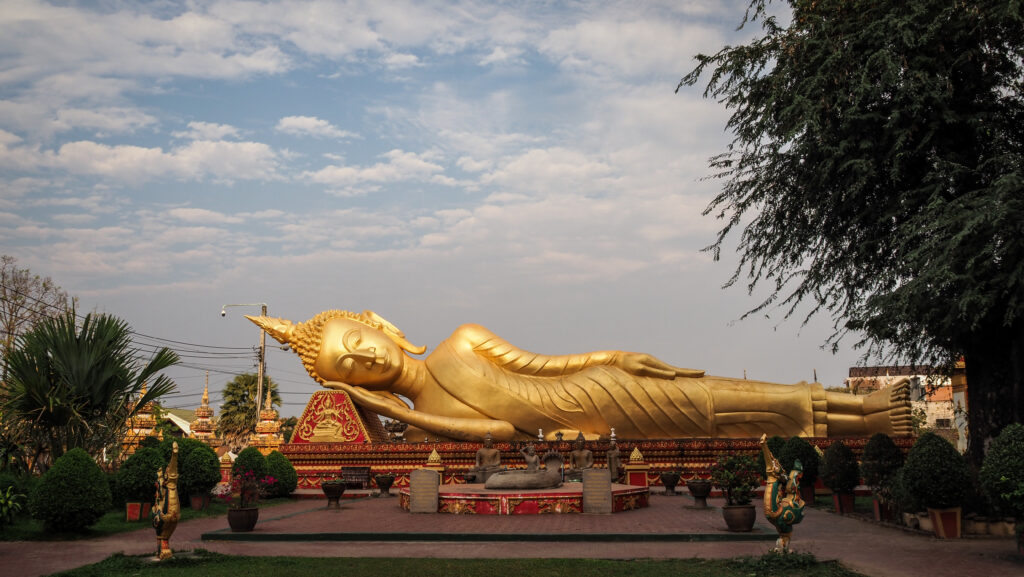
COPE Visitor Center
Laos is considered to be the most bombed country on earth and unexploded ordnance from the Vietnam War keeps wounding and killing people. COPE is the abbreviation of Cooperative Orthotic & Prosthetic Enterprise and it provides casualties with artificial limbs, walking aids and wheelchairs.
It’s a very educational and informative place. Don’t miss the screening room for showings of several documentaries. Entrance is free but a donation is highly encouraged to support their recovery programs.
Wat Si Saket
It’s the oldest surviving temple in the capital of Laos, built by the last monarch of the Kingdom of Vientiane and dates back to the 19th century. You can experience a tranquil atmosphere while exploring the temple grounds, adorned with numerous Buddha statues and well-preserved murals.
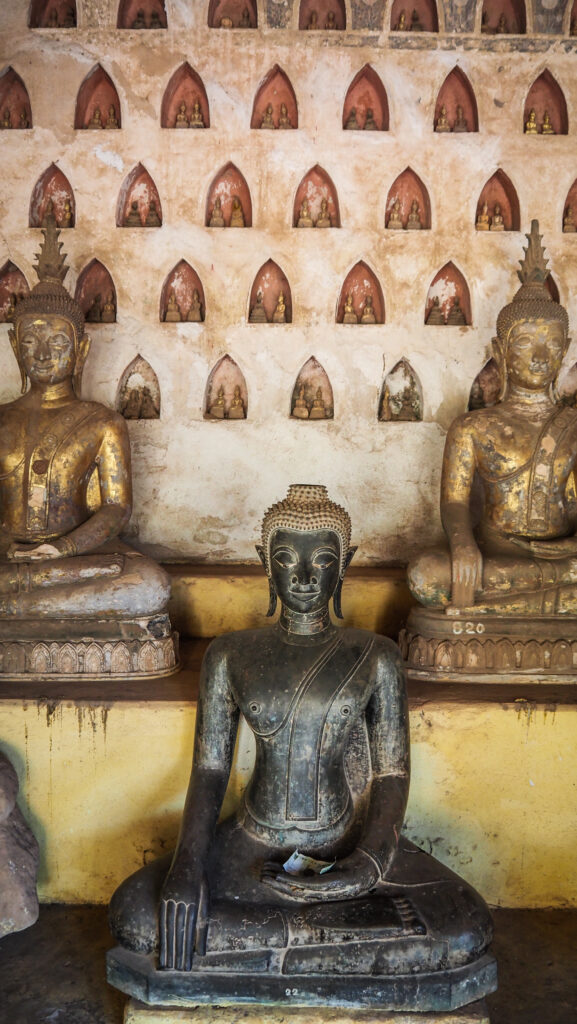
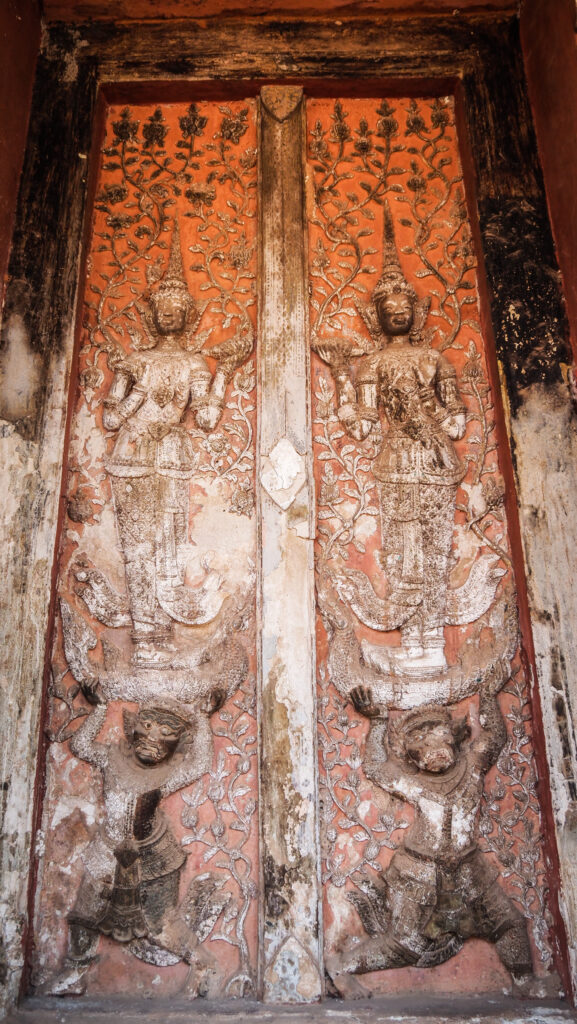
Wat Si Muang
The people in the area have a great deal of respect for one of the most significant and well-known religious locations in the city. It is thought that the temple was erected on the site where, during the city’s building, a young woman by the name of Si Muang gave herself as a sacrifice. The main pillar of the temple is said to have been penetrated by her spirit, endowing it with supernatural strength and elevating it to a sacred site.
The Sim, the ordination hall and centre of religious activity, is the primary attraction of the temple. It is embellished with vivid murals and detailed carvings that tell Buddhist mythology and stories. There are numerous religious objects and a sizable statue of Buddha within the Sim. The custom of residents visiting Wat Si Muang to create merit and ask for blessings for significant life events is one of the temple’s distinctive features.
Ho Phrakeo Museum
Haw Pha Kaeo, a once-royal temple constructed especially to accommodate the renowned Emerald Buddha, is now a small national museum of religious art. A small collection of Lao Buddhas, Khmer carvings, and artefacts from nearby temples may be found in the main hall.
Wat Ong Teu
Although the temple’s exterior is pretty typical of those in Vientiane, the building itself and its surroundings are in good shape. It is thought to have stood on a location that was originally used for religious purposes in the third century. King Setthathirat first constructed it in the middle of the 16th century. Nonetheless, it was destroyed in subsequent battles with the Siamese, just like practically every other temple in Vientiane, and reconstructed in the 20th century.
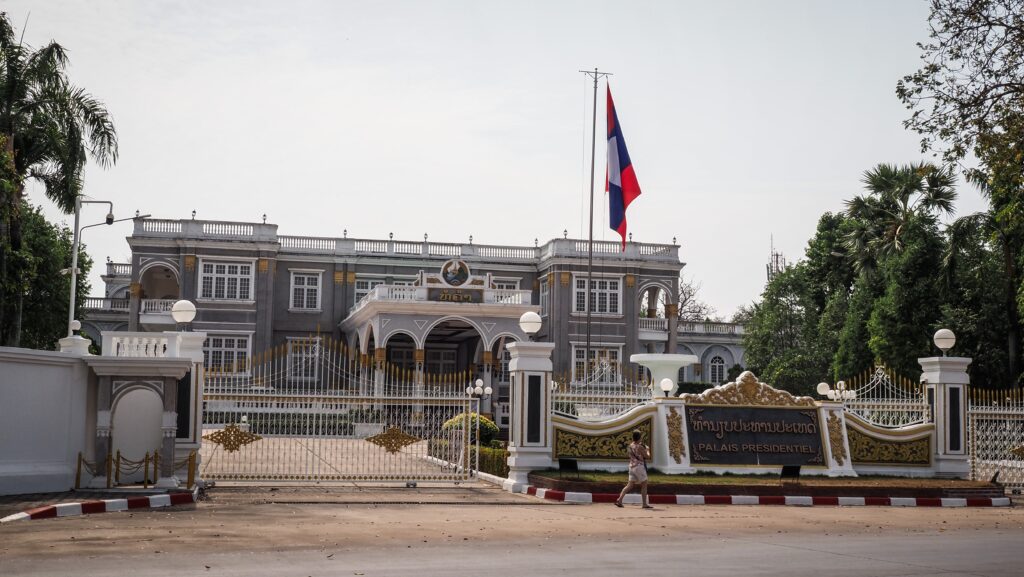
That Dam Stupa
This stupa is said to have originally had a layer of gold covering it. According to legend, the gold was taken by the Siamese during their 1828 raid, which is when the stupa earned the nickname “black.” This is somewhat contradicted by another tale, which claims that the stupa is the home of a seven-headed dragon that was dormant until the Siamese-Lao War of 1828 when it awoke to protect the people of the area.
Kaysone Phomvihane Museum
Kaysone Phomvihane was the first leader of an independent Laos. The museum was established in 1995 to commemorate his 75th birthday. The museum is an expansive homage to Kaysone’s cult, with an enormous bronze monument of him in front and other massive sculptures that feature important people in Laos. The structure is filled with a complete collection of memorabilia of both Kaysone and the Party.
Lao National Museum
There are some interesting exhibits here even though the selection of objects and pictures is not as extensive or well-organized as you might anticipate at a national museum. A collection of antiquated artefacts that document the early history of the area, including dinosaur bones, shards of pottery, and Khmer sculptures, are kept on the ground level.
The displays upstairs provide additional insight, tracing Laos’ turbulent contemporary history from the French colonial era and Siamese invasions to the American military’s involvement in the Vietnam War and up to the present. Since the establishment of communism in 1975 and the fight for independence are heavily emphasised, the museum was originally dubbed the Lao Revolutionary Museum.
Lao Textile Museum
This estate features multiple wooden houses designed in the native style, with a focus on textiles from many ethnic groups and the phases of weaving and dying.
Outside of town
Buddha Park
A quiet place full of Buddhist and Hindu sculptures, located about 25 km southeast of central Vientiane. The park was started in 1958 by Luang Pu Bunleua Sulilat who was a priest-shaman who integrated Hinduism and Buddhism. The statues appear to be centuries old but in fact, they are quite new. They are made of reinforced concrete and are sometimes quite bizarre in design.
To get there, you can take bus #14 from Talat Sao Bus Station, hire a tuk tuk or ride a rented motorbike. An entrance ticket costs 40,000 LAK for tourists.
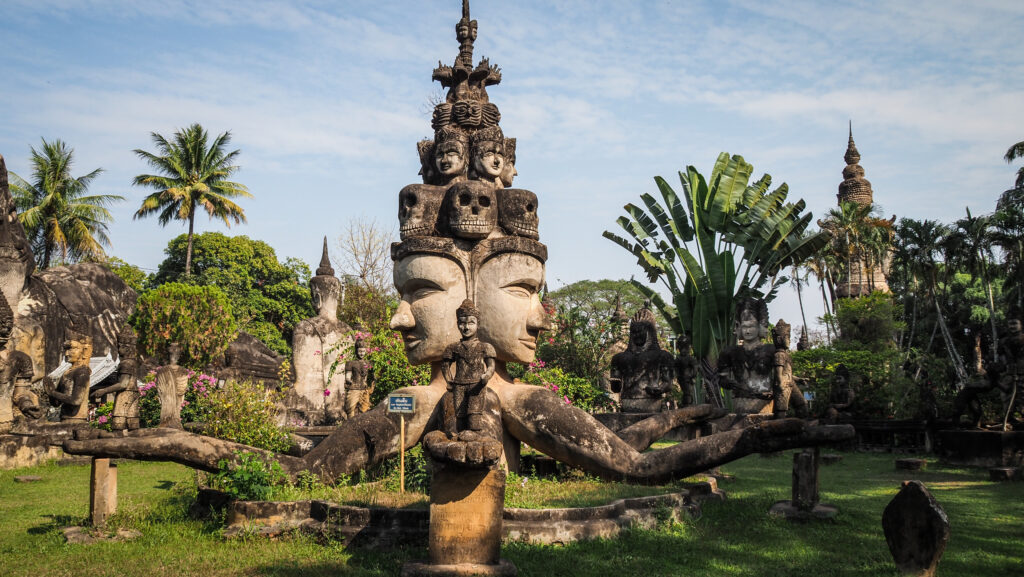
Phou Khao Khouay National Bio-Diversity Conservation Area
The park covers more than 2000 km2 and is home to a wide array of endangered wildlife, including wild elephants, gibbons, Asiatic black bears, clouded leopards, Siamese fireback pheasants and green peafowls. It’s not a very popular place, therefore it’s not that easy to plan the visit there.
As I couldn’t find any organized tours, I went there on a rented motorbike. It’s about 100 km and 2.5 hours ride one way. The full-day trip makes sense only if you leave very early but still, it’s pretty far away, I must say.
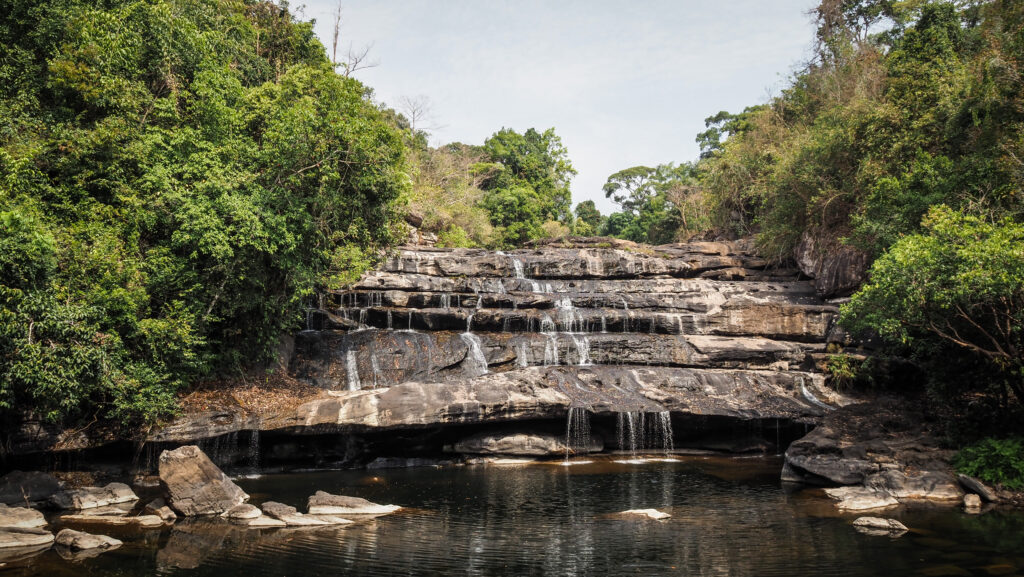
First, I visited Tat Leuk Waterfall. The ride there was quite fun, as I followed the dirt road deeper and deeper into the forest. Unfortunately, in the dry season, there was hardly any water flowing. Another waterfall worth checking in is Tat Xai.
When it comes to trekking, the options vary from a couple of hours to a couple of days and the best is to consult your plans at Tourism Information Centre in Vientiane (if you are lucky enough to find it open).

